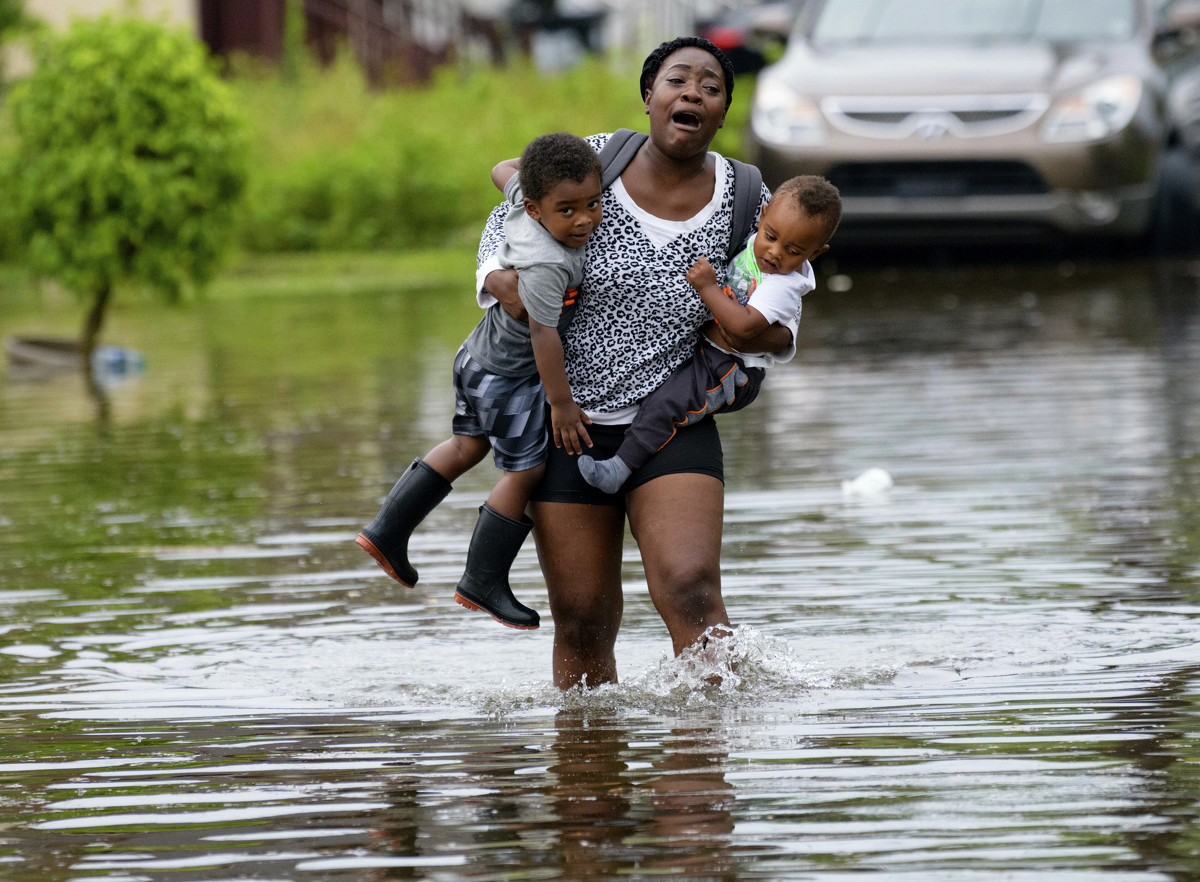
Terrian Jones reacts as she feels something moving in the water at her feet as she carries Drew and Chance Furlough to their mother on Belfast Street in New Orleans during flooding from a storm in the Gulf Mexico that dumped lots of rain Wednesday, July 10, 2019. (AP Photo/Matthew Hinton)
NEW ORLEANS (AP) - Tropical Storm Barry formed off the coast of Louisiana on Thursday and threatened to blow ashore as a hurricane with relatively weak winds but torrential rains that could test the flood-control improvements made in New Orleans since Hurricane Katrina 14 years ago.
Forecasters said the first hurricane of the Atlantic season could hit the state's swampy southern tip Friday night or early Saturday, with potentially ruinous downpours that could go on for hours as the storm passes through the metropolitan area of nearly 1.3 million people and pushes inland.
Plaquemines Parish, at Louisiana's low-lying southeastern tip, ordered the mandatory evacuation of as many as 10,000 people, and communities began handing out sandbags. Louisiana Gov. John Bel Edwards declared an emergency and said National Guard troops and high-water vehicles will be positioned all over the state.
"The entire coast of Louisiana is at play in this storm," he warned.
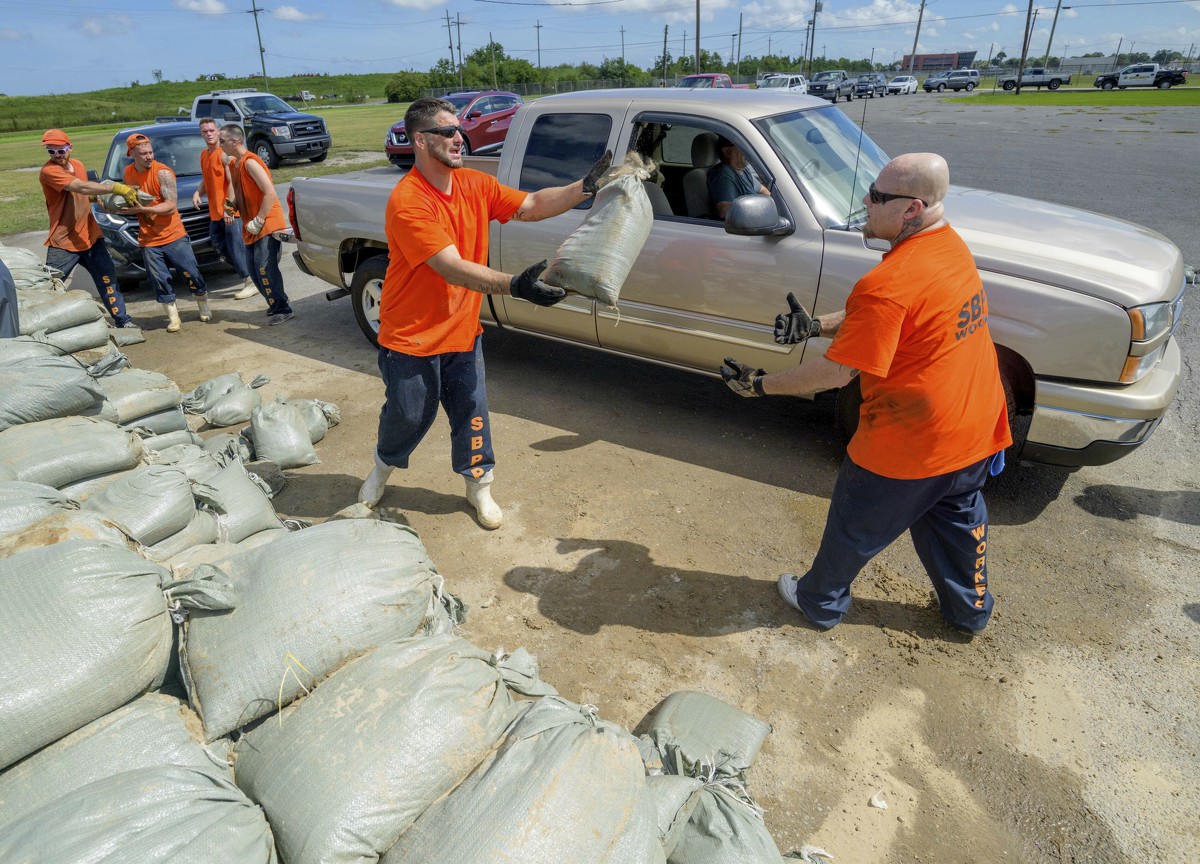
St. Bernard Parish Sheriff's Office inmate workers move free sandbags for residents in Chalmette, La., Thursday, July 11, 2019 ahead of ahead of Tropical Storm Barry from the Gulf of Mexico. (AP Photo/Matthew Hinton)
On Wednesday, with the gathering storm still out over the Gulf of Mexico, it dumped as much as 8 inches (20 centimeters) on metro New Orleans in just three hours. The deluge triggered flash flooding in the city's streets and raised fears about the even heavier rains on the way.
The National Hurricane Center said as much as 20 inches (50 centimeters) of rain could fall in parts of eastern Louisiana, including Baton Rouge, and the entire region could get as much as 10 inches (25 centimeters). The New Orleans area could get 10 to 15 inches (25 to 38 centimeters) through Sunday, forecasters said.
The storm's surge also could prevent water from emptying out of the already-swollen Mississippi River, possibly sending water over levees near New Orleans, forecasters said. The river has been running high for months.
Barry could have winds of about 75 mph (120 kph), just over the 74 mph threshold for a hurricane, when it comes ashore, making it a Category 1 storm, forecasters said.
National Weather Service meteorologist Benjamin Schott said the big concern is water, not wind: "Rainfall and flooding is going to be the No. 1 threat with this storm."
New Orleans Mayor LaToya Cantrell said that the pumping system that drains the city's streets is working as designed but that the slow-moving storm could dump water faster than the pumps can move it.
"We cannot pump our way out of the water levels ... that are expected to hit the city of New Orleans," she warned.
However, the city did not plan to order evacuations because the storm was so close and because it was not expected to grow into a major hurricane. Officials instead advised people to keep at least three days of supplies on hand and to keep their neighborhood storm drains clear so water can move quickly.

Traffic backs up as rain come down at Airline Drive and S. Carrollton Ave. in New Orleans, as severe thunderstorms cause street flooding Wednesday, July 10, 2019. (Max Becherer/The Advocate via AP)
Katrina caused catastrophic flooding in New Orleans in 2005 and was blamed altogether for more than 1,800 deaths in Louisiana and other states.
In its aftermath, the Army Corps of Engineers began a multibillion-dollar hurricane-protection system that isn't yet complete. The work included repairs and improvements to some 350 miles (563.24 kilometers) of levees and more than 70 pump stations that are used to remove floodwaters.
The weather service said it expects the Mississippi to rise to 19 feet (5.8 meters) by Saturday morning at a key gauge in the New Orleans area, which is protected by levees 20 to 25 feet (6 to 7.6 meters) high.
"We're confident the levees themselves are in good shape. The big focus is height," Corps spokesman Ricky Boyett said.
In Plaquemines Parish, Justice of the Peace David McGaha waited with his mother, his wife and their 15-year-old son and 11-year-old daughter for a ferry so they could evacuate to his mother's house in Alabama.
"If the river wasn't so high, we'd probably stay. You have to worry about the water that'll be pushing against those levees," he said. "They made a lot of improvements to the levee, but they haven't completed all the projects."
___
Associated Press reporters Chevel Johnson and Janet McConnaughey contributed to this report from New Orleans.

People cope with the aftermath of severe weather in the Broadmoor neighborhood in New Orleans, Wednesday, July 10, 2019. (Nick Reimann/The Advocate via AP)
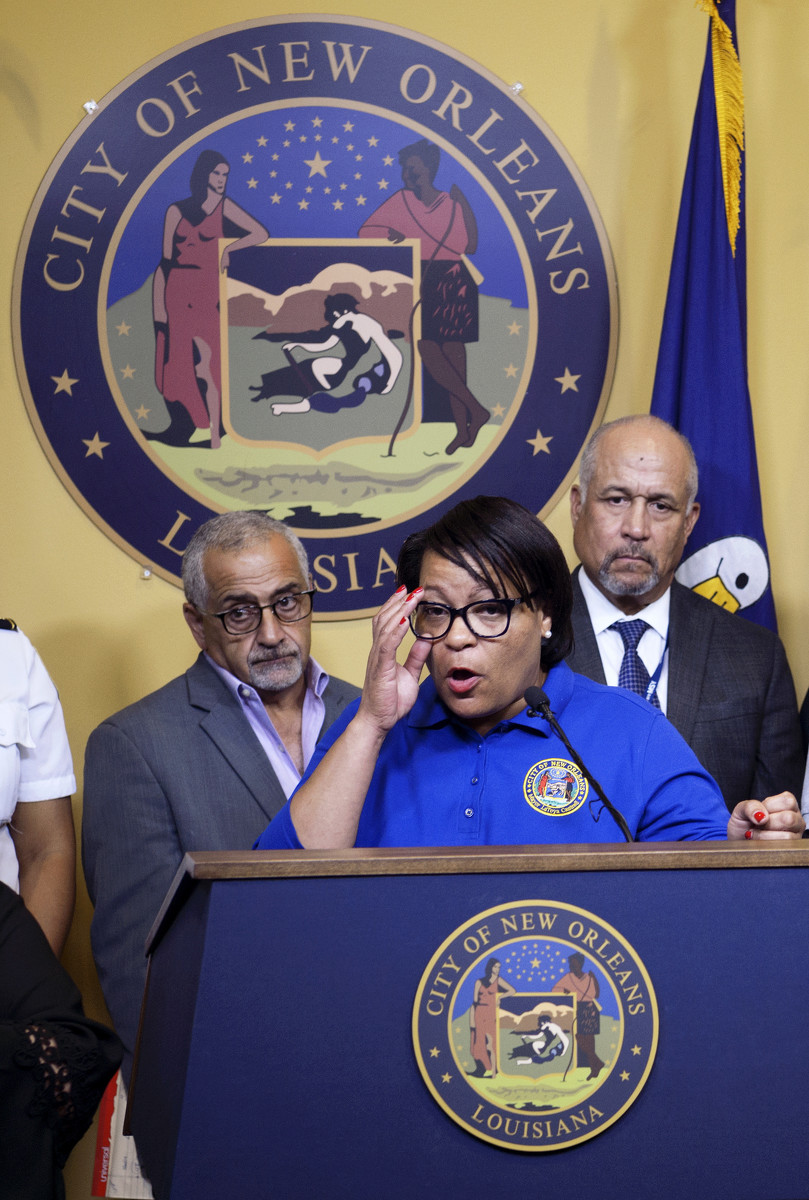
New Orleans Mayor LaToya Cantrell and public safety officials update media on rainfall, flooding and severe weather precautions at City Hall in New Orleans on Wednesday, July 10, 2019. Cantrell says the city's Treme (truh-MAY) neighborhood got 8.4 inches (21.3 centimeters) of rain in three hours, and more nasty weather is on the way. She says she has declared an emergency. (Max Becherer/The Advocate via AP)
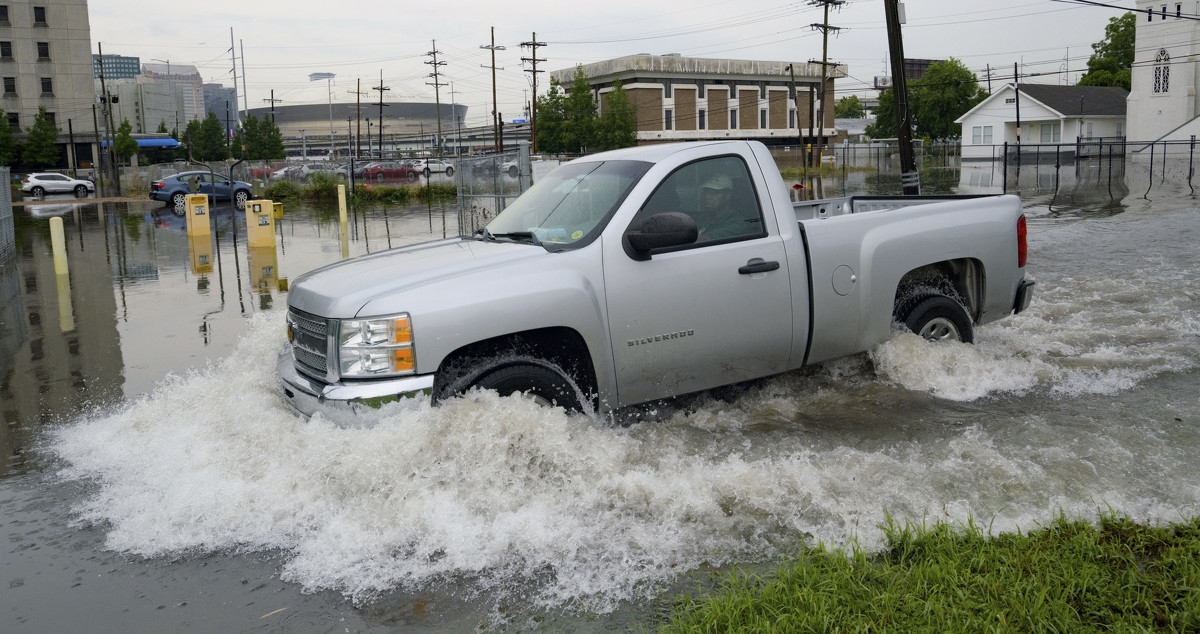
A truck passes by the University Medical Center (UMC) with the Mercedes-Benz Superdome in the background on Glavez Street in New Orleans after flooding from a storm Wednesday, July 10, 2019. Louisiana Gov. John Bel Edwards has declared a state of emergency in anticipation of tropical weather that could dump as much as 15 inches (38 centimeters) of rain in the state over the coming days. (AP Photo/Matthew Hinton)
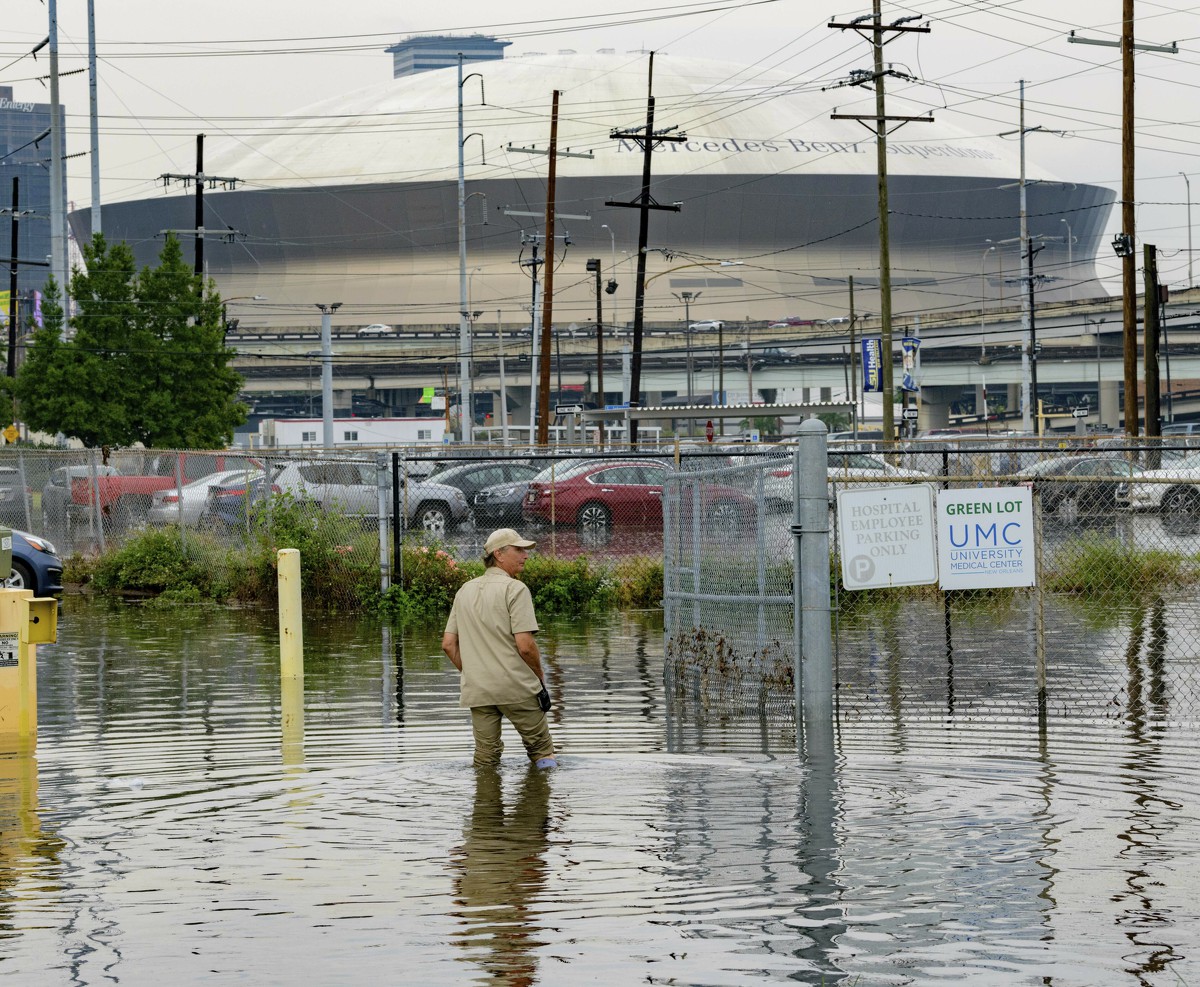
Frank Conforto Jr. walks in the parking lot of the University Medical Center (UMC) with the Mercedes-Benz Superdome in the background on Glavez Street in New Orleans after flooding from a storm Wednesday, July 10, 2019. Louisiana Gov. John Bel Edwards has declared a state of emergency in anticipation of tropical weather that could dump as much as 15 inches (38 centimeters) of rain in the state over the coming days. (AP Photo/Matthew Hinton)

Jalana Furlough carries her son Drew Furlough as Terrian Jones carries Chance Furlough on Belfast Street near Eagle Street in New Orleans after flooding from a tropical wave system in the Gulf Mexico that dumped lots of rain in Wednesday, July 10, 2019. (AP Photo/Matthew Hinton)
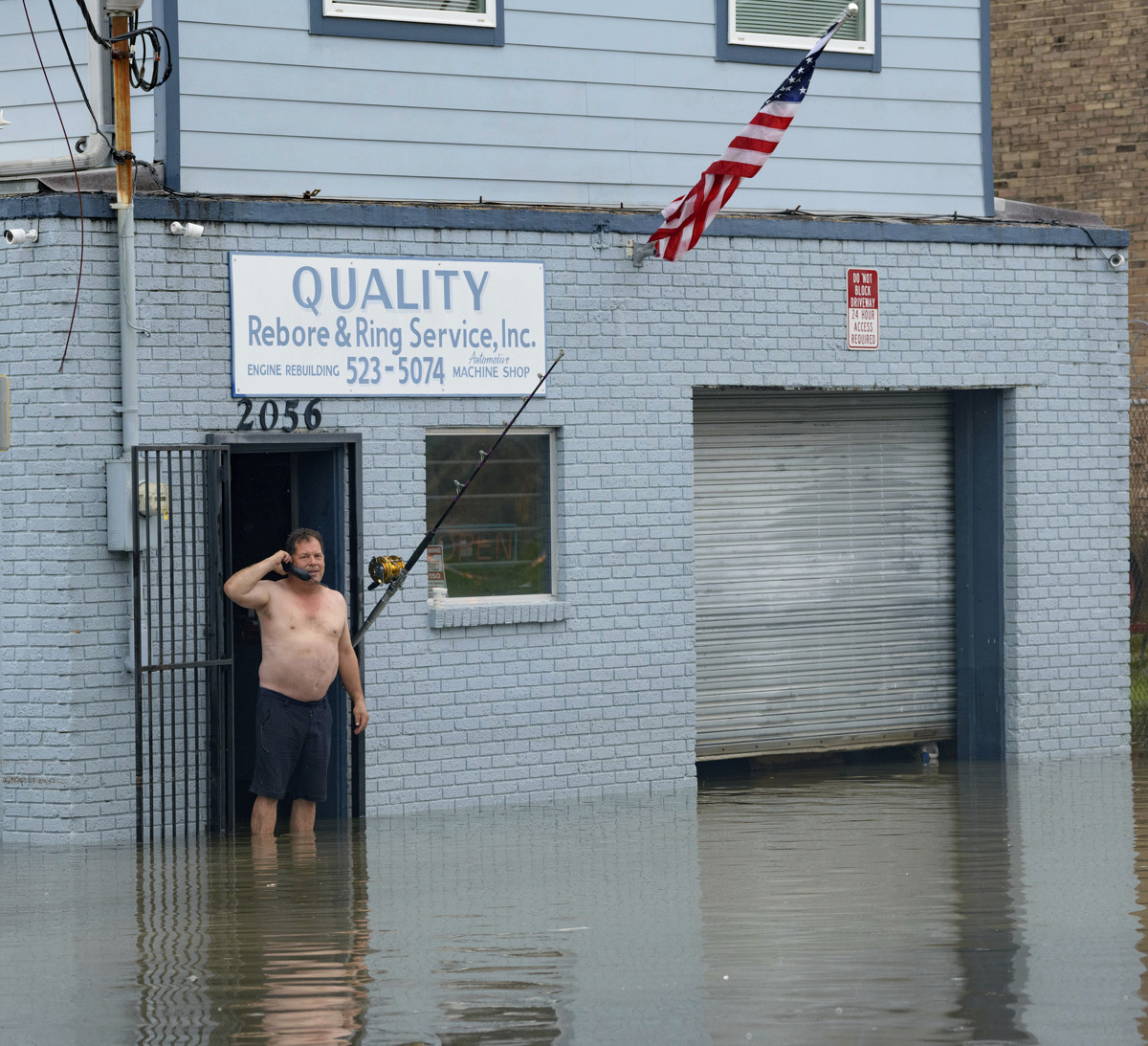
David Fox makes a call from his business on Poydras Street in New Orleans after flooding in New Orleans Wednesday, July 10, 2019. A storm swamped New Orleans streets and paralyzed rush-hour traffic Wednesday as concerns grew that even worse weather was on the way. (AP Photo/Matthew Hinton)

Flooding comes up the wheels of a parked car on Belfast Street near Eagle Street in New Orleans Wednesday, July 10, 2019 after flooding from a 100-year storm from a tropical wave system in the Gulf Mexico dumped lots of rain. The wave system may form into a hurricane called Barry later in the week. (AP Photo/Matthew Hinton)
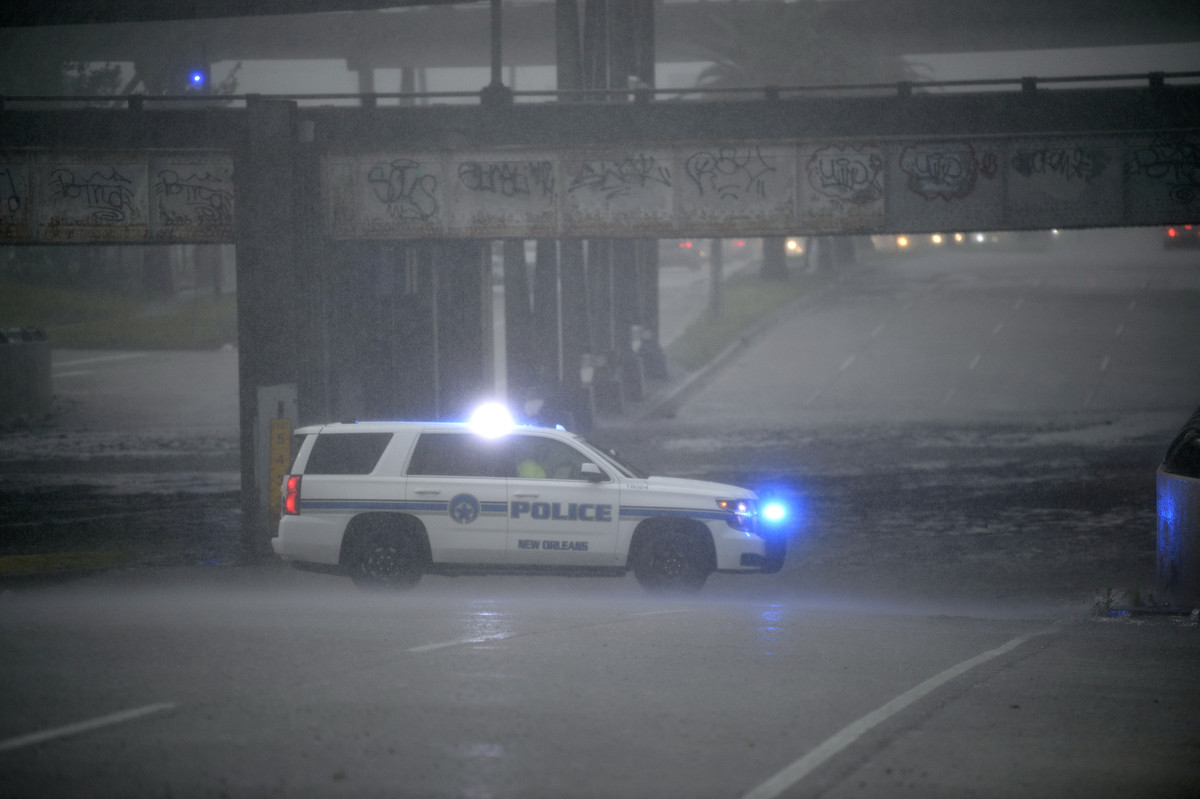
An NOPD cruiser blocks the underpass at S. Carrollton Ave. in New Orleans as severe thunderstorms caused street flooding, Wednesday, July 10, 2019. (Max Becherer/The Advocate via AP)
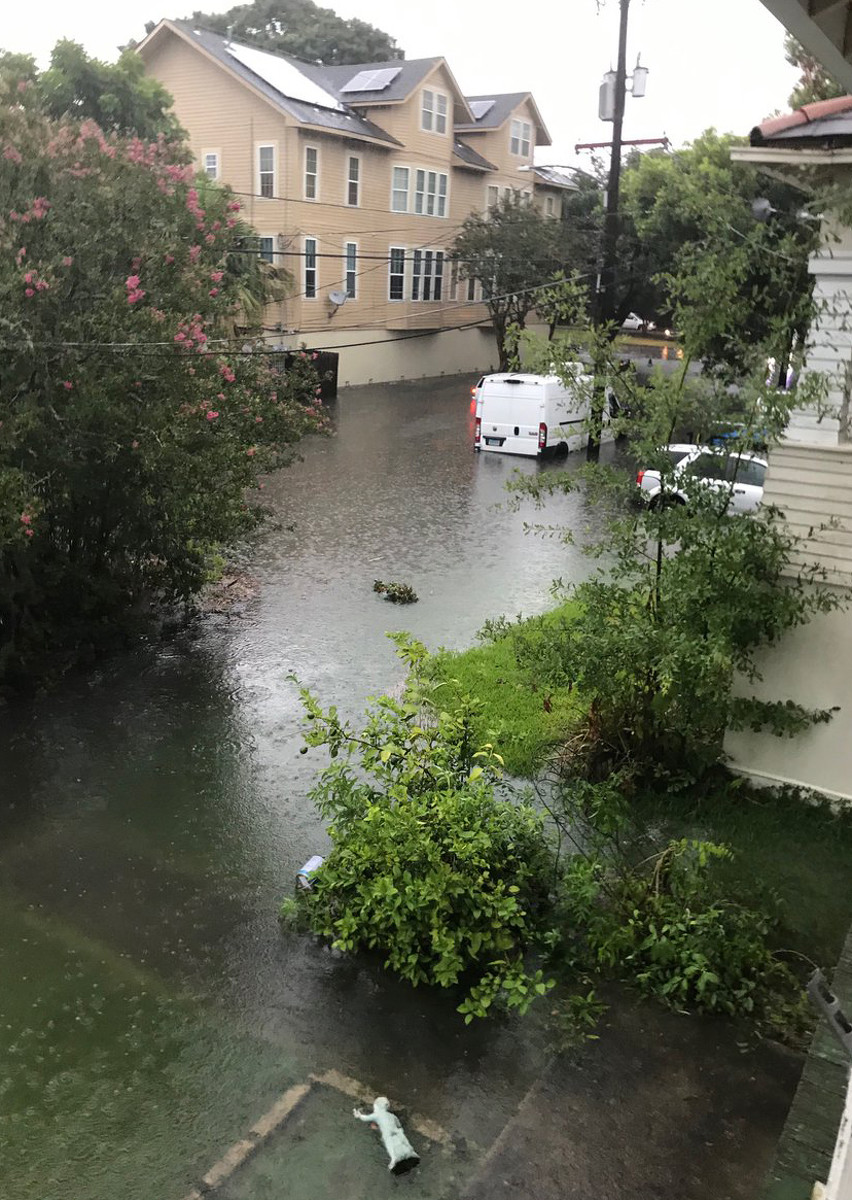
In this photo made available by Conway, a street in New Orleans is flooded by heavy rain, Wednesday, July 10, 2019. (Conway via AP)
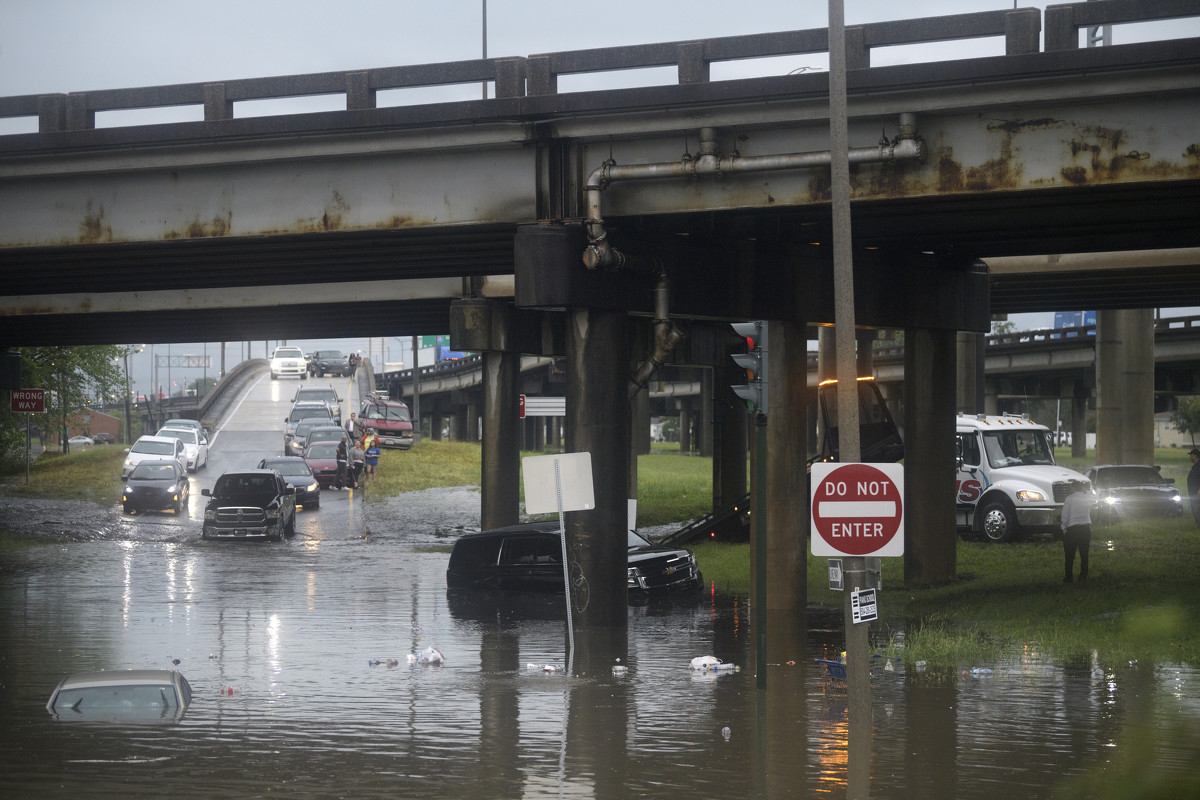
Motorists react in New Orleans react as the intersection at Franklin Ave. and 610 floods after a severe thunderstorm Wednesday, July 10, 2019. A storm swamped streets in New Orleans and prompted a tornado warning near the city Wednesday as concerns grew that even worse weather is on the way to Louisiana and other states along the Gulf of Mexico. (Max Becherer/The Advocate via AP)
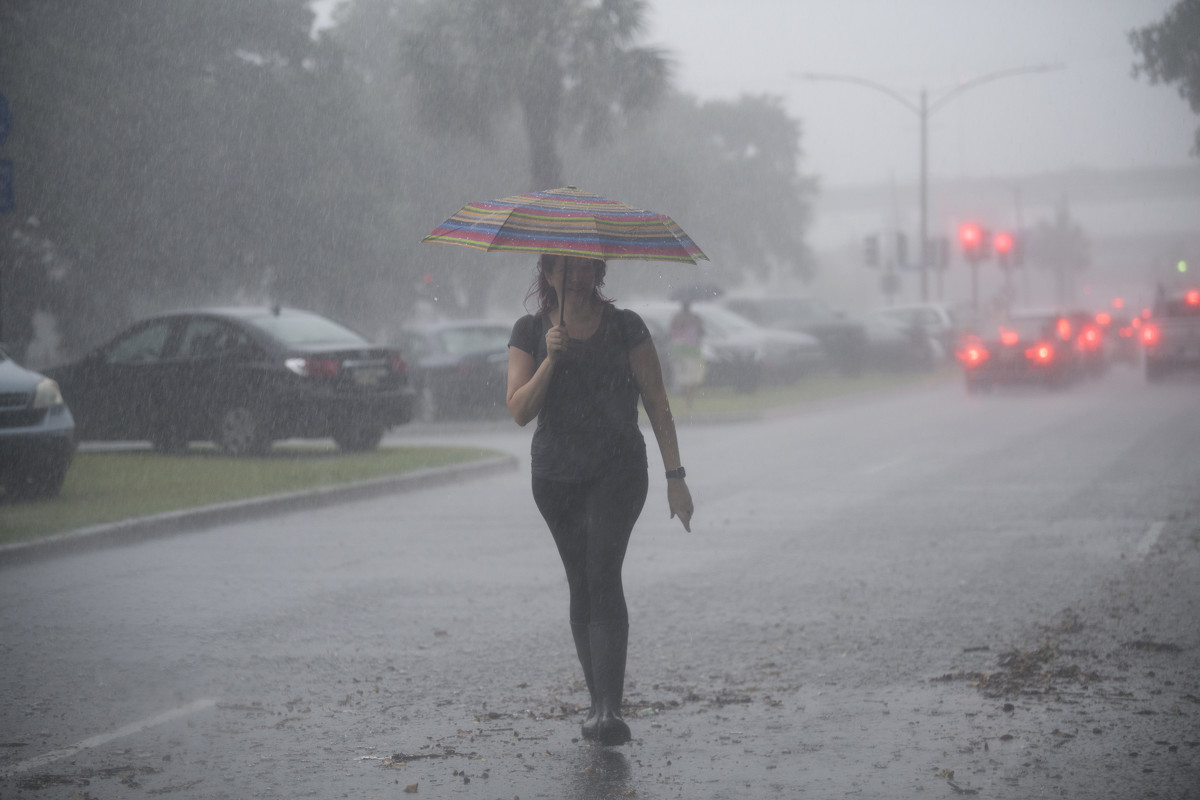
A woman walks along S. Carrollton Ave. in New Orleans where cars are parked on the neutral ground to keep from flooding caused by severe thunderstorms, Wednesday, July 10, 2019.A storm swamped streets in New Orleans and prompted a tornado warning near the city Wednesday as concerns grew that even worse weather is on the way to Louisiana and other states along the Gulf of Mexico. (Max Becherer/The Advocate via AP)
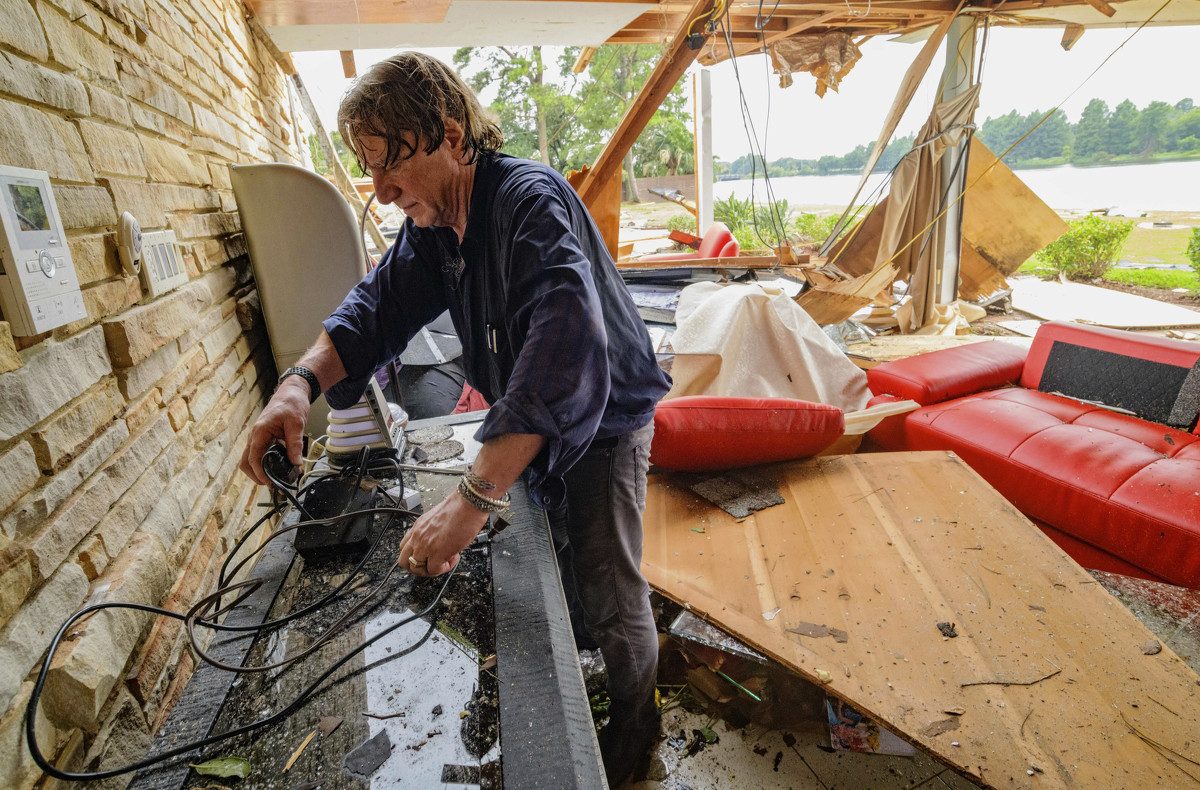
Eric Ehlenberger, a physician and neon artist, goes through his damaged home in New Orleans on Wednesday, July 10, 2019, following a storm that swamped the city and paralyzed traffic. Ehlenberger said his wife was able to crawl out safely. (AP Photo/Matthew Hinton)
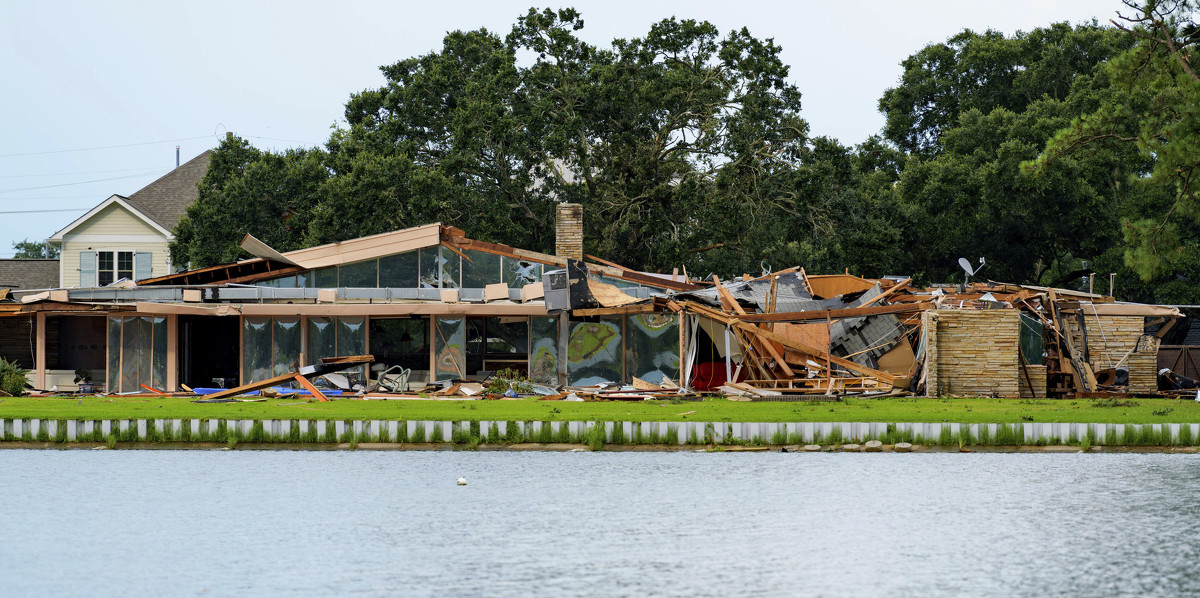
This photo shows the damaged home of Eric and Indra Ehlenberger in New Orleans on Wednesday, July 10, 2019, following a storm that went through the area. The storm swamped New Orleans streets and paralyzed traffic Wednesday as concerns grew that even worse weather was on the way: a possible hurricane that could strike the Gulf Coast and raise the Mississippi River to the brim of the city's protective levees. (AP Photo/Matthew Hinton)

Residents sit under a bus shelter along a flooded Broad Street as heavy rain falls, Wednesday, July 10, 2019, in New Orleans. (David Grunfeld/The Advocate via AP)

Eric Ehlenberger, a physician and neon artist, pauses as he goes through his damaged home in New Orleans on Wednesday, July 10, 2019, following a storm that swamped the city and paralyzed traffic. Ehlenberger said he and his wife Indra suffered a storm from a tropical wave system in the Gulf of Mexico passed through. He said his wife was also able to crawl out safely. (AP Photo/Matthew Hinton)

St. Bernard Parish Sheriff's Office inmate workers move free sandbags for residents in Chalmette, La., Thursday, July 11, 2019 ahead of ahead of Tropical Storm Barry from the Gulf of Mexico. Forecasters said the first hurricane of the Atlantic season could hit the state's swampy southern tip on Friday, with the biggest danger posed not by the wind but by downpours that could go on for hours. (AP Photo/Matthew Hinton)
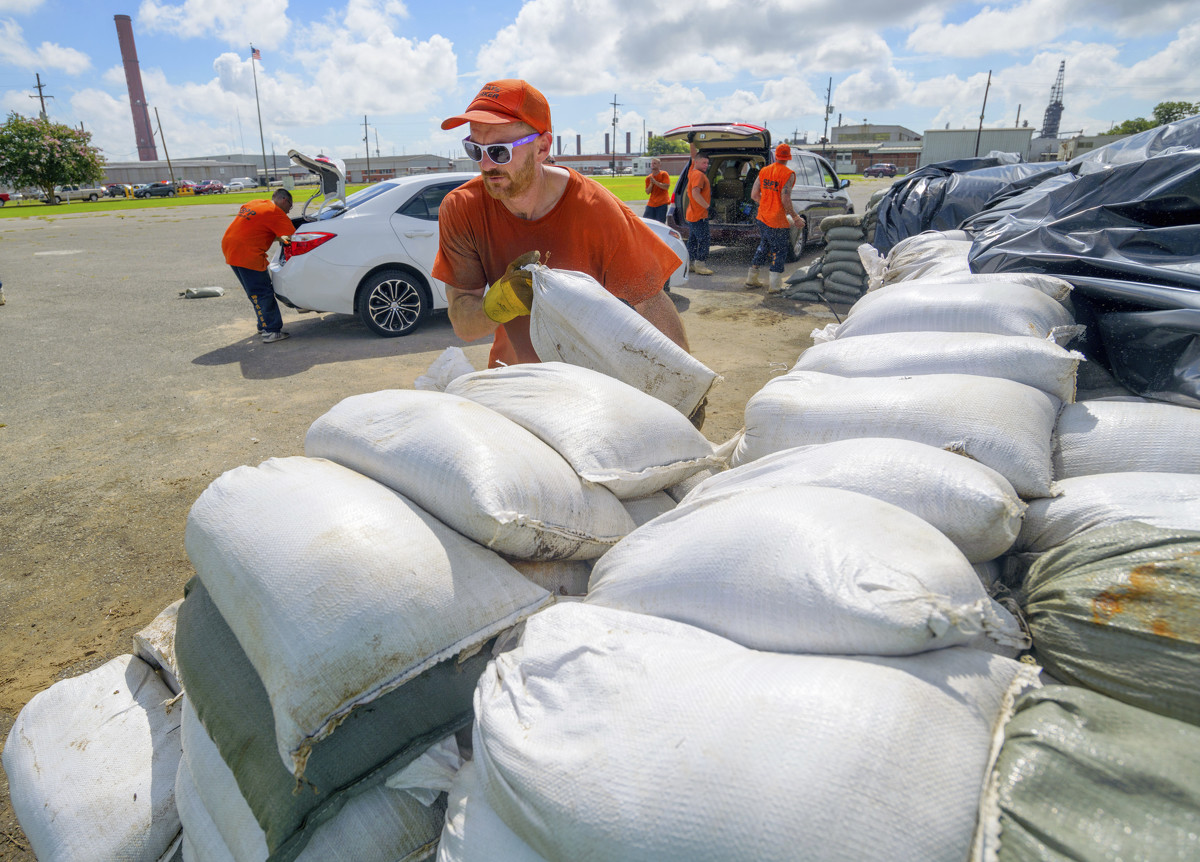
St. Bernard Parish Sheriff's Office inmate workers move free sandbags for residents in Chalmette, La., Thursday, July 11, 2019 ahead of ahead of Tropical Storm Barry from the Gulf of Mexico. Forecasters said the first hurricane of the Atlantic season could hit the state's swampy southern tip on Friday, with the biggest danger posed not by the wind but by downpours that could go on for hours. (AP Photo/Matthew Hinton)

The Mississippi River is at 16 feet, which is just below flood stage, 17 feet, in New Orleans, Thursday, July 11, 2019 ahead of Tropical Storm Barry from the Gulf of Mexico. The river levees protect to about 20 feet, which the river may reach if predicted storm surge prevents the river from flowing into the Gulf of Mexico. (AP Photo/Matthew Hinton)
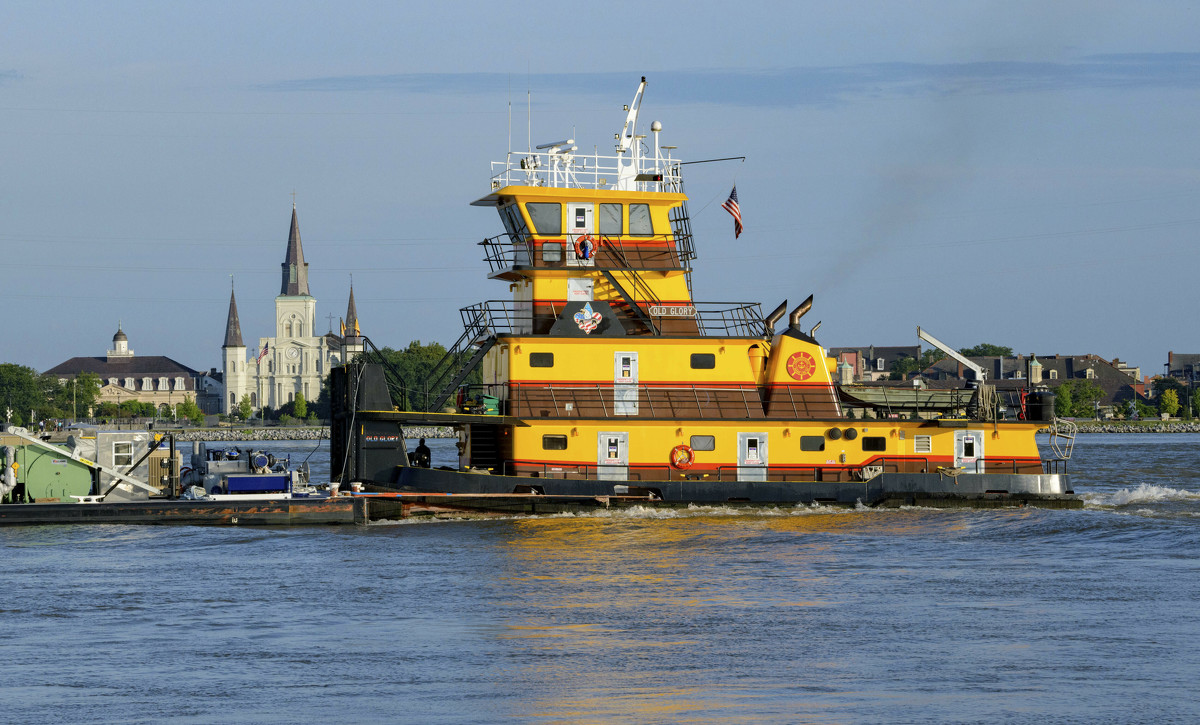
The Old Glory towing vessel appears taller than St. Louis Cathedral in the French Quarter as the Mississippi River is currently above 16 feet, which is just below flood stage at 17 feet, in New Orleans, Thursday, July 11, 2019 ahead of Tropical Storm Barry from the Gulf of Mexico. The river levees protect to about 20 feet, which the river may reach if predicted storm surge prevents the river from flowing into the Gulf of Mexico. (AP Photo/Matthew Hinton)